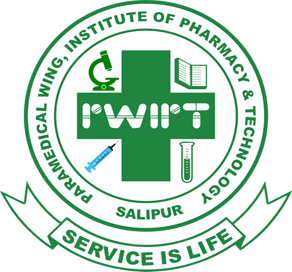| 1 |
Colorimeter |
It is an instrument that allows for the measurement of light and its intensity to match the color as it is perceived by the human eye.It compares the measured color against the standard colors with the color spaces. |
| 2 |
Centrifuge |
Centrifuges are mainly used to separate a few unnecessary particles from a compound by rotating them inside a rotator device. |
| 3 |
Differential Count |
It is used for blood infections and allergies. |
| 4 |
Haemometer |
It is used to measure the concentration ofhemoglobin in blood tests. |
| 5 |
Haemocytometer |
The hemocytometer (or hemocytometer) is a counting-chamber device originally designed and usually used for counting blood cells. |
| 6 |
Incubator |
It uses for the growth of microorganisms in many fields, including medical, pharmaceuticals, agricultural, environmental, food, and industrial microbiology, public health, basic research, and education |
| 7 |
Light Microscope |
A light microscope is used to magnify objects too small to be seen with the naked eye. Light microscopes use a series of lenses to magnify specimens. |
| 8 |
Compound Microscope |
The identification of diseases becomes easy in pathology labs with the help of a compound microscope. Forensic laboratories use compound microscopes for the detection of human fingerprints. |
| 9 |
Autoclave |
It is particularly useful for media-containing water that cannot be sterilized by dry heat. It is the method of choice for sterilizing the following: Surgical instruments, Culture media, Autoclavable plastic containers, Solutions and water Biohazardous waste Glassware (autoclave resistible) |
| 10 |
Hot Air Oven |
It is used to clean and sterilize the media, Chemicals, and apparatus. |
| 11 |
Spectrophotometer |
It is useful in qualitative analysis, especially when identifying classes of compounds in both biological and pure states. |
| 12 |
Electrophoresis kit |
It is used in the analysis of DNA analysis the studying of DNA fragments. |
| 13 |
Laminar Airflow |
It is used for the aseptic transfer of microbial cultures. |
| 14 |
Stethoscope |
It is used to listen to the sound made by the heart, lungs, and intestine, as well as blood flow in arteries and veins. |
| 15 |
Water Bath |
It is used to incubate samples at a constant temperature over a long period of time. |
| 16 |
Sphygmomanomete |
It is used to measure blood pressure. |
| 17 |
Blood Cell Counter |
It is used to help diagnose and monitor other conditions. |
| 18 |
Ph Meter |
It is used to determine the Ph of chemical solutions, acids, and bases. |
| 19 |
Antibiotic Zone Reader |
It is used to determine the zone of inhibition of antimicrobial substances by measuring the diameter. |
| 20 |
Packed Cell Volume |
It is used to diagnose dehydration (Low body fluids or blood volume) |

